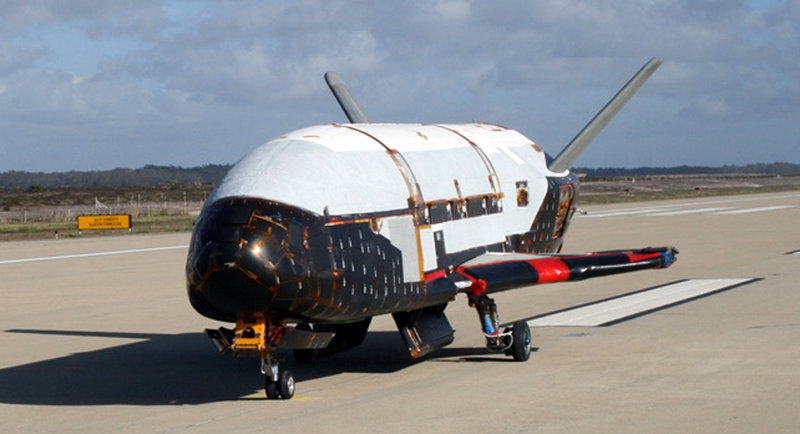LOS ANGELES — An unmanned Air Force space plane steered itself to a landing early Saturday at a California military base, capping a 15-month clandestine mission.
The spacecraft, which was launched from Cape Canaveral Air Force Station in Florida in March 2011, conducted in-orbit experiments during the mission, officials said. It was the second such autonomous landing at Vandenberg Air Force Base, 130 miles northwest of Los Angeles. In 2010, an identical unmanned spacecraft returned to Earth after seven months and 91 million miles in orbit.
The latest homecoming was set in motion when the stubby-winged robotic X-37B fired its engine to slip out of orbit, then pierced through the atmosphere and glided down the runway like an airplane.
“With the retirement of the Space Shuttle fleet, the X-37B OTV program brings a singular capability to space technology development,” said Lt. Col. Tom McIntyre, the X-37B’s program manager. “The return capability allows the Air Force to test new technologies without the same risk commitment faced by other programs. We’re proud of the entire team’s successful efforts to bring this mission to an outstanding conclusion.”
With the second X-37B on the ground, the Air Force planned to launch the first one again in the fall. An exact date has not been set.
The twin X-37B vehicles are part of a military program testing robotically controlled reusable spacecraft technologies. Though the Air Force has emphasized the goal is to test the space plane itself, there’s a classified payload on board — a detail that has led to much speculation about the mission’s ultimate purpose.
Some amateur trackers think the craft carried an experimental spy satellite sensor judging by its low orbit and inclination, suggesting reconnaissance or intelligence gathering rather than communications.
Harvard astrophysicist Jonathan McDowell, who runs Jonathan’s Space Report, which tracks the world’s space launches and satellites, said it’s possible it was testing some form of new imaging.
The latest X-37B was boosted into orbit atop an Atlas 5 rocket. It was designed to stay aloft for nine months, but the Air Force wanted to test its endurance. After determining the space plane was performing well, the military decided in December to extend the mission.
At a budget hearing before a Senate Armed Services subcommittee in March, William Shelton, head of the Air Force Space Command, said the fact that the second X-37B has stayed longer in space than the first shows “the flexibility of this unique system.”
Send questions/comments to the editors.



Success. Please wait for the page to reload. If the page does not reload within 5 seconds, please refresh the page.
Enter your email and password to access comments.
Hi, to comment on stories you must . This profile is in addition to your subscription and website login.
Already have a commenting profile? .
Invalid username/password.
Please check your email to confirm and complete your registration.
Only subscribers are eligible to post comments. Please subscribe or login first for digital access. Here’s why.
Use the form below to reset your password. When you've submitted your account email, we will send an email with a reset code.